Breaking
- MENU
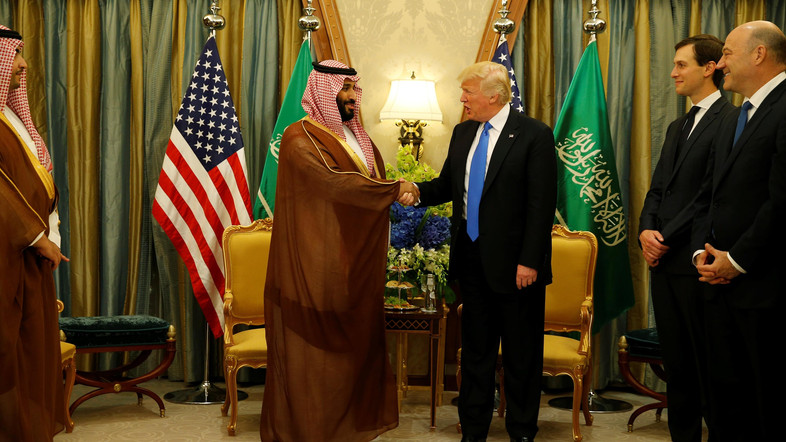
Saudi Crown prince Muhammad bin Salman’s visit to the United States of America to celebrate the 75th anniversary of the special relationship between the two countries took place when the premise of ‘oil for security’ is under contestation. The US is no more dependent on oil from the region and does not want to be the guarantor of its security. Though this takes away the basis of special relationship, the two countries do share common regional geopolitical interests for robust strategic engagement.
President Donald Trump’s first overseas visit was to Saudi Arabia. It can be argued that a new process of disengagement and engagement is going to be the new normal of relationship that the crown prince would like to craft during his visit. In the new normal the two are going to have an adversarial relationship in the energy market. International Energy Agency (IEA) has reported that with the production prospects of 10 million barrels a day, the US is going to overtake Saudi Arabia and Russia as the largest oil producer and by 2025 it will be the net exporter of hydrocarbon for the first time since 1948.
It was after September 11 that the US administration realized that the oil dependence is impinging on their security and it began the search for energy independence. Shale revolution made it possible and the US could meet its demands and reduced imports. With increasing capacities, the US realized that it could be player in the market and hence in 2015 decided to lift the ban on energy exports.
However with President Trump coming to power, the US scaled up its profile by declaring its ambition to dominate the global energy market. “An energy dominant America means self-reliant. It means a secure nation, free from the geopolitical turmoil of other nations who seek to use energy as an economic weapon…. An energy dominant America will export to markets around the world, increasing our global leadership and our influence" he declared. Besides trading, the US intends to use energy as an instrument of foreign policy. Its entry in the energy market as exporter changes the power dynamics but the energy market today does not accrue leverage to a single player to dominate. Moreover, it is no more a sellers’ market.
Apparently, the competition is not for domination but market share and price. The OPEC lost out its market share and price protection since the arrival of Shale. The steep decline of oil prices and the market share made the OPEC under Saudi leadership to redo its arithmetic and diplomacy. It decided to cut oil production by negotiating with non-OPEC players including Russia. During the historical visit of Saudi King to Moscow late last year, energy was the central script of the bilateral relationship. If Saudi Arabia was facing a huge loss of revenue to balance its fiscal needs, Russia too felt the urgency to stabilize the prices to finance its budget. The historical deal between OPEC and non-OPEC in late 2016 leading to cut in production by 1.8 million barrel per day and its compliance of more than hundred per cent led to the reversal of market crash of 2014. Prices rebounded to US$70.
The Russo-Saudi collaborative approach did help not only in arresting the further decline but also contributed to its recovery and led to the narrowing down the fiscal gap in both the countries besides other OPEC and non-OPEC players. Though the understanding among them is to carry over production cut to 2018 to maintain the balance, the indications seem to be contesting it.
On the extreme scenario of escalation of tension between Saudi Arabia and Iran to war like situation, the oil prices could reach any height. A more plausible scenario could be where Saudi posturing by its rhetoric of acquiring the nuclear weapon and the US move to dump the Iranian nuclear deal might make Iran to come out of the compliance of production cut. This will certainly harm Saudi Arabia in implementing its reforms. More than Iran, Saudi Arabia needs oil prices to be around US$70. In fact, Iranian oil minister is reported to have favoured US$60 dollar mark because in his judgment higher oil prices would lead to a surge in shale supply. The market is already talking of the second wave of shale. The IEA forecast is that the US oil production will increase by 30 per cent that is 17 mb/d and will be meeting 80 per cent of new global demand in next three years.
The geopolitical implications of the emerging realities are going to push more uncertainty in the market. The magnitude of this needs to be appreciated against the backdrop of the rise of renewable and the peaking of energy demand in the West and, in not too distant time, in China. The first cargo of the US oil came to Japan and South Korea. It is reported that China is emerging major Asian market for the US. In January 2018, China imported 400,000 b/d from the US besides half a million tonnes of LNG. On 5 March, the first US LNG cargos have moved to India from Sabie Pass terminal in Louisiana towards the implementation of 20 years deal between Houston-based Cheniere and GAIL India to supply 3.5 million metric tons of LNG annually. Importantly, the ‘aligns’ with the Strategic Energy Partnership announced by President Trump during Modi’s visit last summer. The advantage with US oil is the price factor and it is cheaper by US$4 per barrel.
Though Saudi Arabia no more enjoys the leadership leverage in hydrocarbon market, it remains a player with consequences. It has reserves and the cost that could out class any player and trigger a price war. But being given to the path of moving post-oil phase, it needs a very judicious energy policy to negotiate with diverse players on both ends of the spectrum towards a stable price regime with legitimate market share. While Saudi Arabia and Russia have common concerns to keep the price stabilize both are vulnerable to American supplies and its strategic fall out in Asia and Europe.
______________________________________
As part of its editorial policy, the MEI@ND standardizes spelling and date formats to make the text uniformly accessible and stylistically consistent. The views expressed here are those of the author and do not necessarily reflect the views/positions of the MEI@ND. Editor, MEI@ND: P R Kumaraswamy
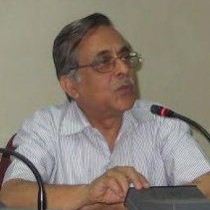
Girijesh Pant is a National Fellow of Indian Council of Social Science Research (ICSSR) at Symbiosis International University Pune. Formerly, he was Dean of the School of International Studies at JNU and has served as Vice-Chancellor at Doon University, Uttarakhand and GGD University at Bilaspur. He is also associated with higher academic bodies like the University Grant Commission, ICSSR, Indian Council of World Affairs, etc. He has recently been appointed as Member, Academic Committee of the School of International and Area Studies, Tsinghua University. China. His academic interest includes development studies with a focus on India and West Asia; political economy of Gulf countries; political economy of international energy; India’s energy security and energy relations, India’s economic relations with GCC countries. Awarded Lifetime Achievement Award by Venkateshwara University Tirupati, he has been Senior Fulbright Visiting Scholar, University of Illinois, IL. He has travelled widely and participated and contributed papers in several national and international conferences, journals and books. Presently he is working on energy transition concerning India.
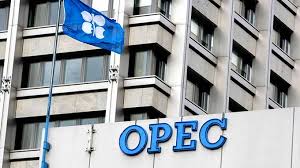
"For me to put efforts and resources and time in an organization that we are a very small playe.....
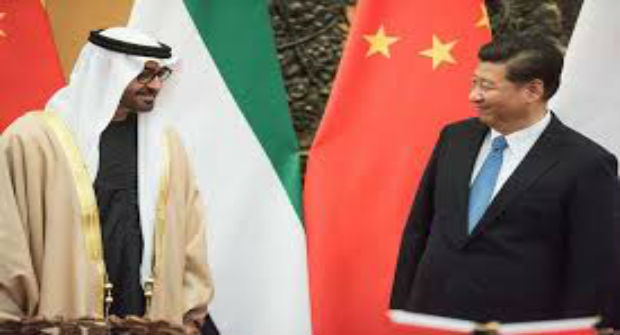
The proceedings of recent visit of the Chinese President Xi Jinping to UAE may not cast sh.....

On the mid-night of 24 June, streets in Saudi Arabia witnessed a celebration of sorts, not.....
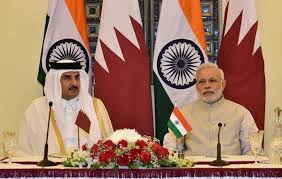
After one year of the blockade, the economy of Qatar is linked more dynamically beyond its immediate.....
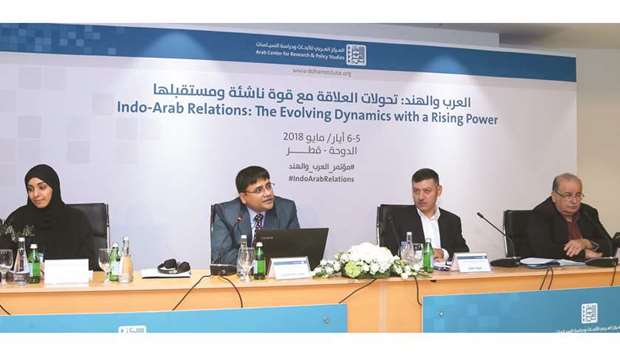
India’s prospective engagement with the Arab world, especially the six-member Gulf Cooperation.....

A Financial Action Task Force (FATF) report criticizing Saudi Arabia’s anti-money laundering and terrori.....

With multiple Middle Eastern disputes threatening to spill out of control, United Arab Emirates minister of st.....

Embattled former Malaysian Prime Minister Najib Razak was the main loser in last month’s elect.....

On the mid-night of 24 June, streets in Saudi Arabia witnessed a celebration of sorts, not revolutio.....

Saudi Arabia’s bitter rivalry with Iran has spilled onto Asian soccer pitches with the newly c.....

A controversy in Algeria over the growing popularity of Saudi-inspired Salafi scholars spotlights the risk gov.....

Subtle shifts in Chinese energy imports suggest that China may be able to exert influence in the Middle East i.....

Egyptian general-turned-president Abdel Fattah Al-Sisi won a second term virtually unchallenged in what is wid.....

Protests have erupted in Iran’s oil-rich province of Khuzestan barely three months after the Islamic rep.....

The recent violation of Israel’s air space by an Iranian drone and Israel’s retaliation against Sy.....

During his speech at the annual Munich Security Conference in February, Saudi Minister of Foreign Affairs Adel.....

Saudi Arabia, in an indication that it is serious about shaving off the sharp edges of its Sunni Muslim ultra-.....

A Saudi draft law could constitute a first indication that Crown Prince Mohammed bin Salman’s vow to ret.....

Saudi Crown Prince Mohammed bin Salman has won the first rou.....

The egregious violation of freedom of the press in Turkey has reached a mammoth proportion that places Turkey .....

Kuwaiti billionaire Maan al-Sanea should have seen it coming after Saudi Crown Prince Mohammed bin Salman vowe.....

The Iraqi Kurds’ referendum that was conducted several weeks ago won an overwhelming majority in favour .....

Long-standing Saudi efforts to dominate the pan-Arab media landscape appear to have moved into high gear with .....

